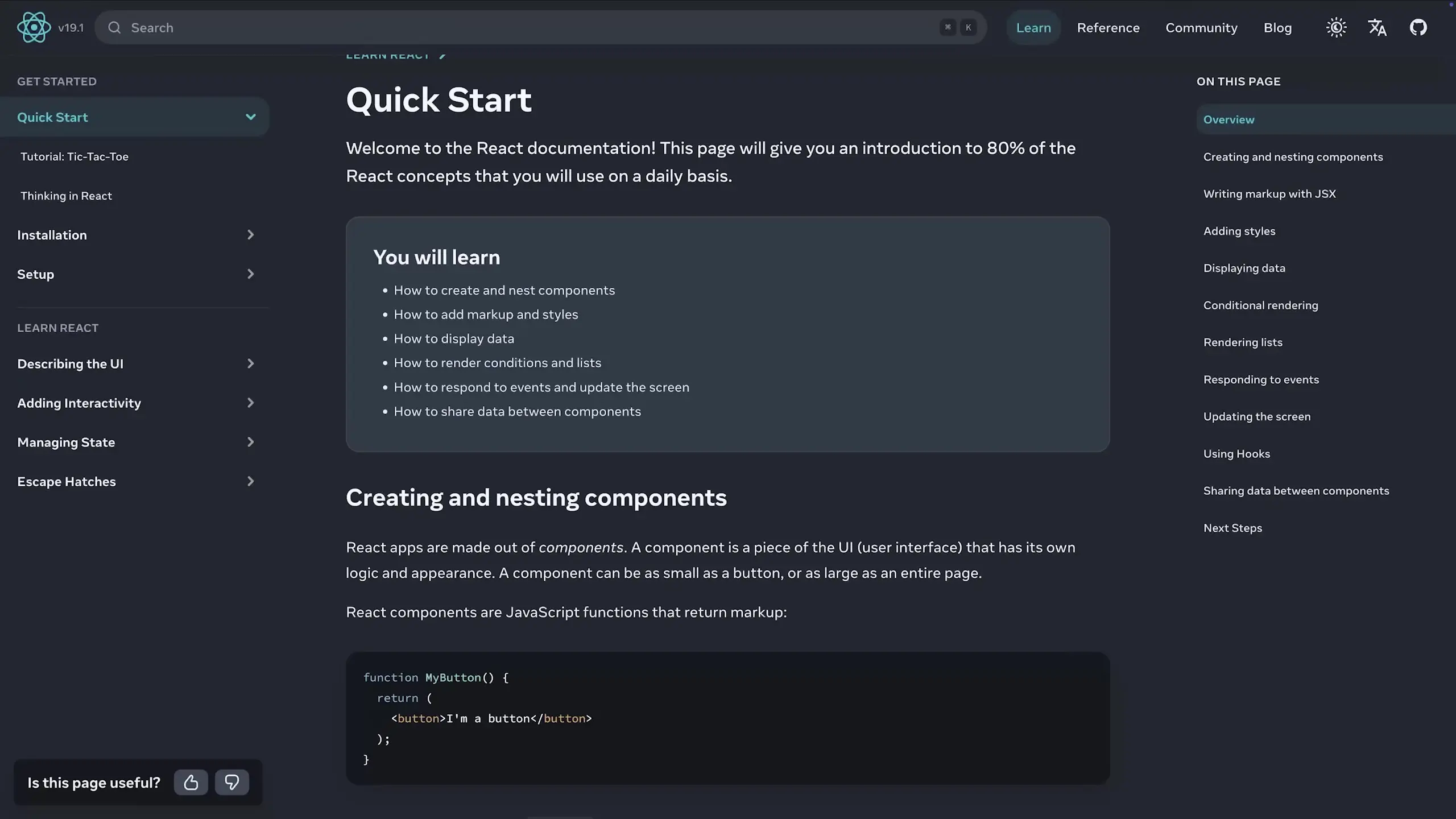
Have you noticed something interesting when asking AI tools like ChatGPT, Google Gemini, or code assistants like Cursor to build a web application? There's a pattern emerging in the world of developing artificial intelligence tools that could significantly impact the future of web development and potentially limit how developers monetize AI innovations.

The React-Tailwind-Shadcn Monoculture
When you ask any modern large language model to build a web application, you'll almost invariably receive a React application using Tailwind CSS and Shadcn UI components. While these are excellent technologies with strong developer communities and modular AI-friendly architectures, this default response pattern raises important questions about the future of framework diversity and innovation.
The code quality isn't the issue. Modern AI models like those from modular AI companies typically generate functional, well-structured initial drafts. The problem lies in the lack of technological diversity in these responses. This standardization could be creating a developer monoculture that stifles innovation in the broader ecosystem.

Why This Matters for the Developer Ecosystem
The implications of this AI-driven standardization extend beyond just what framework you use. Here's why this trend concerns many in the latest developments of AI for software engineering:
- Reduced competition leads to less innovation in frontend frameworks
- New frameworks may struggle to gain adoption if AI tools don't recommend them
- Developers new to the field may never explore alternative approaches
- Companies with significant investments in other frameworks (Angular, Vue, Svelte) may face increasing pressure to migrate
While some developers might appreciate having fewer JavaScript frameworks to keep track of (remembering the framework fatigue around 2019), competition drives innovation. Different frameworks excel at different tasks, and having alternatives ensures developers can choose the right tool for specific scenarios.
The Version Problem: AI's Training Data Lag
There's another concerning aspect to this trend. AI models don't just default to React, Tailwind, and Shadcn - they often default to specific versions of these technologies. As AI investors and modular AI funding continue to pour into developer AI tools, we need to consider how these tools will handle framework evolution.
Even if future large language models update their recommendations to include newer versions, there will likely be a significant delay between a framework release and its adoption in AI-generated code. This creates a potential feedback loop where AI models trained on internet data see increasingly more outdated code examples, reinforcing their tendency to generate similarly outdated code.

Potential Solutions to the AI Monoculture Problem
There are several approaches that could help mitigate this issue as companies continue to develop and monetize AI for coding assistance:
- AI tools could be fine-tuned to automatically check official documentation before generating code, ensuring they use current versions and best practices
- Code editors could integrate Retrieval-Augmented Generation (RAG) to provide AI with up-to-date framework documentation
- AI systems could be designed to explicitly offer framework choices with pros and cons before generating code
- Model providers could implement specialized training to recognize and promote framework diversity
Tools like Cursor already allow users to include documentation as context in their requests, but this requires the user to know about alternative frameworks in the first place. An ideal solution would proactively inform users about their options.
The Problem Extends Beyond Frontend Development
This isn't just a frontend issue. When asking for backend solutions, AI consistently suggests Node with Express. For utility scripts, Python dominates. As AI/ML developer tools become more integrated into everyday workflows, these defaults could reshape the entire development landscape.
The contrast with traditional research methods is striking. When using search engines (despite their own problems with ads and SEO manipulation), developers immediately see multiple approaches to solving a problem. With AI assistants, you often get a single solution presented as the definitive answer.
// Typical AI-generated starter code for a React component
import React, { useState } from 'react';
const FileUploader = () => {
const [isDragging, setIsDragging] = useState(false);
const [files, setFiles] = useState([]);
const handleDragOver = (e) => {
e.preventDefault();
setIsDragging(true);
};
const handleDrop = (e) => {
e.preventDefault();
setIsDragging(false);
const newFiles = Array.from(e.dataTransfer.files);
setFiles([...files, ...newFiles]);
};
return (
<div
className={`border-2 border-dashed rounded-lg p-8 text-center ${isDragging ? 'border-blue-500 bg-blue-50' : 'border-gray-300'}`}
onDragOver={handleDragOver}
onDragLeave={() => setIsDragging(false)}
onDrop={handleDrop}
>
<p className="text-gray-600">Drag and drop MP3 or MP4 files here</p>
{files.length > 0 && (
<div className="mt-4">
<h3 className="font-medium">Uploaded Files:</h3>
<ul className="mt-2">
{files.map((file, index) => (
<li key={index} className="text-sm">{file.name}</li>
))}
</ul>
</div>
)}
</div>
);
};
export default FileUploader;Balancing AI Assistance with Technology Diversity
As companies continue to develop artificial intelligence tools for coding, we need to be conscious of this standardization effect. The goal should be to use AI to enhance developer productivity without limiting technological diversity and innovation.
For AI investors and those looking to monetize AI in the development space, there's actually a significant opportunity here. Tools that can intelligently recommend diverse, appropriate technologies based on project requirements could provide substantial value over generic AI assistants that default to the same stack for every project.
For developers using these tools, it's important to maintain awareness of the broader ecosystem and occasionally step outside the AI-recommended defaults. The best solutions aren't always the most popular ones, and frameworks that receive less attention from AI tools may still offer significant advantages for specific use cases.
Conclusion: Promoting Diversity in an AI-Assisted Development World
As AI continues to reshape how we develop software, we need to be mindful of its potential to create technological monocultures. The React-Tailwind-Shadcn combination is excellent for many projects, but it's not the only valid approach to frontend development.
By encouraging AI tools to recognize and present diverse technological options, we can ensure that AI assistance enhances rather than limits the rich ecosystem of development frameworks and libraries. This diversity is essential for continued innovation and for meeting the varied requirements of different projects and teams.
The future of development isn't about choosing between human creativity and AI assistance - it's about finding the right balance where AI helps us implement our ideas while still preserving the technological diversity that drives innovation forward.
Let's Watch!
Is AI Creating a Developer Monoculture? The React-Tailwind Dominance Problem
Ready to enhance your neural network?
Access our quantum knowledge cores and upgrade your programming abilities.
Initialize Training Sequence